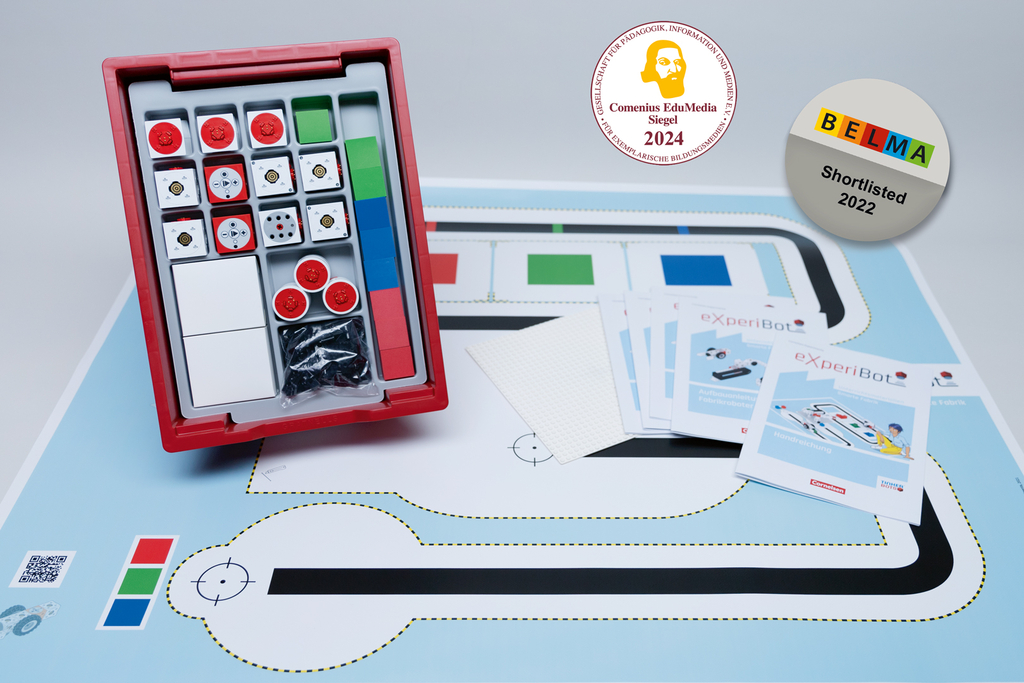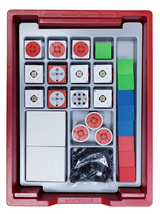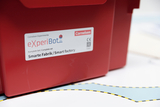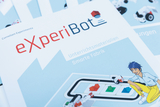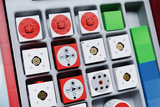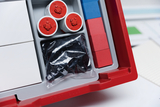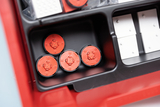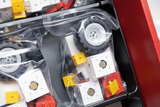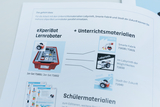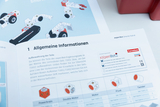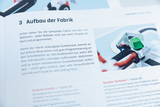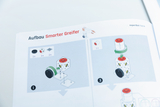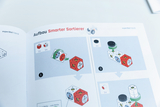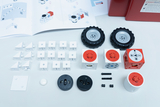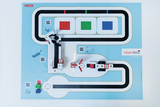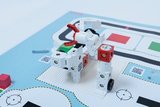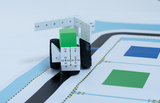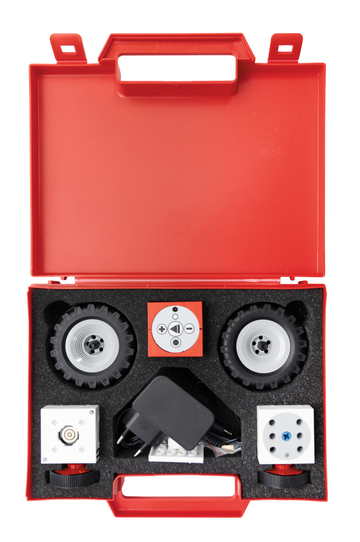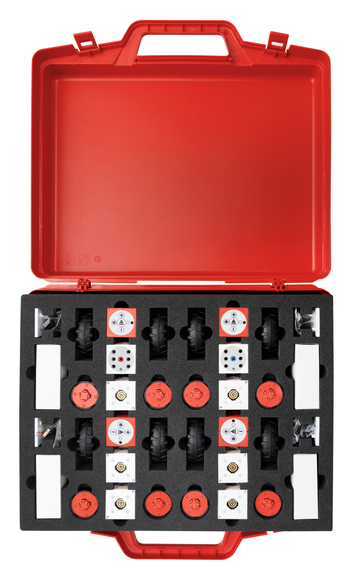Smart factory: eXperiBot learning robot with teaching material
eXperiBot Smart Factory
In eXperiBot Smart Factory four cooperative educational robots bring the real world into the classroom. A real factory was used as a model for developing the scenario.
Once the eXperiBot Smart Team (Art. No. 72631) is released, the Smart Factory will be included as one of three scenarios. If you purchase the eXperiBot Smart Factory now, it will be supplemented by the scenarios included in the eXperiBot Smart Team - Smart Recycling and Smart Farm - free of charge.
The didactic materials for teachers and students include a short introductory comic and worksheets suitable for use from grade 5 onwards. The Pusher, Gripper, Conveyor, and Sorter provide four individual stations for work in different learning groups and at various learning levels. The Smart Factory operates effectively when all the educational robots interact with one another, fostering a spirit of teamwork!
The educational robots use multi-sensor technology to navigate the game board by following printed lines and colours. Additionally, the cartoon character Arianna offers your students tips and tricks to help everyone learn programming.
The eXperiBot learning robot impresses with its simplicity, step-by-step logic and reduction to the essentials for ideal classroom use and is entirely "Made by Cornelsen".
2024 eXperiBot Smart Factory has been awarded the prestigious Comenius EduMedia Seal.
2022 eXperiBot learning robot was nominated for the Best European Learning Materials Award (BELMA).
Special features
- A short comic directly involves the children in the new task of the programmer Arianna.
- Arianna guides the children through the programming tasks and gives tips when necessary.
- Multimedia accompaniment directly from the game plan.
Programming with the eXperiBot Blockly app
- The eXperiBot Blockly app from Cornelsen Experimenta is the visual code editor that makes programming with the eXperiBot easy.
- Specially developed for school lessons, the app provides students from grade 5 to the A-levels with an exciting introduction to the world of programming.
- By dragging and dropping the graphical code blocks, programming can be learnt easily and intuitively.
- Different learning levels allow a didactic reduction of the selection options to suit the respective level of knowledge of the students.
- The simple choice of language encourages interdisciplinary teaching - programming can be carried out in German and English.
- The programmes can be displayed in block view or in Python, i.e. the app is also suitable for use in higher classes.
The set includes
- Game plan
- Handout for teachers
- Worksheets as copy templates
- All building blocks and robot modules for building the necessary factory robot models
Technical specifications
Powerbrain
Operating life: sufficient for several teaching units or one project day.
With uninterrupted use with utilisation of all power-consuming modules, the useful life is approx. 3 hours.
Operating systems
Windows, macOS, Android, iOS
Available in the app stores for Windows and macOS computers as well as Android and Apple tablets.
The pusher’s job is to move packages from the pick-up area of the game board to the gripper arm. To do so, the pusher must move back and forth along its predetermined path. The basic elements of the motion comprise following the line and reversing direction at the end of the line.
The gripper arm’s job is to take the packages sent by the pusher and lift them onto the conveyor. This requires the programming of a series of movements with servomotors (twister, grabber and pivot.
The sorter receives packages from the conveyor, which it must then transport to the right discharge area depending on the colour. To do so, it must first correctly identify the line, in order to remain on its predetermined path. At the same time, it must also obtain information about the section of the path where it is currently located, in order to determine the correct position to “discharge” the cargo.
The basic task of the conveyor in combination with the factory devices is to transport a package to the sorting robot.
In the learning loop, the students are instructed to equip the conveyor with a sorting function.
- 1 × SEG Lidfoam, grey 10 mm
- 1 ×
- 1 × Storing tray, deep, red
- 1 × Tray insert, black 70 mm with 4 partitions
- 1 × Lid for 75028 + 75038
